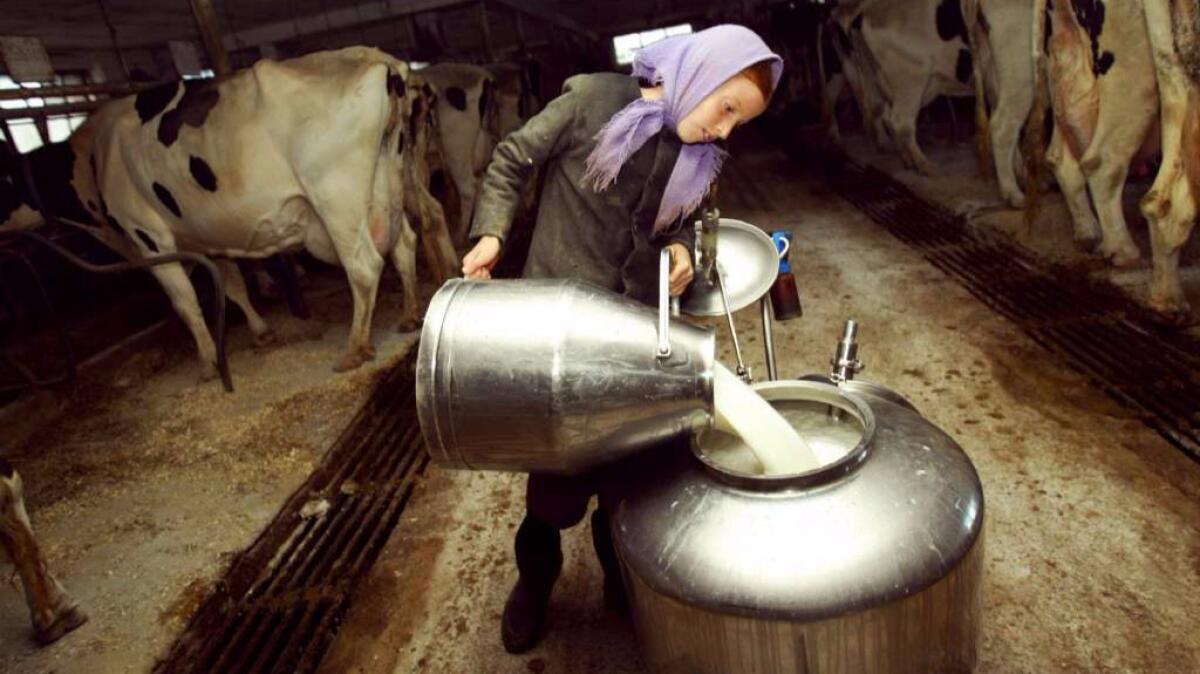Amish kids help scientists understand why farm life reduces the risk of asthma

The old-fashioned ways of the Amish are helping researchers make new discoveries about the origins of asthma.
By studying the blood, genes and environmental dust of 30 Amish children from traditional farming families in Indiana, scientists were able to zero in on the innate immune system as a key player in thwarting asthma and the allergic reactions that can trigger it. Their findings appear in Thursdayâs edition of the New England Journal of Medicine.
Experts have long recognized that exposure to farm animals â and the microbes associated with them â protects children from asthma. But exactly how and why this happens remained something of a mystery.
Amish children seemed to hold important clues. For some reason, they are less susceptible to asthma than other kids. Nationwide, 13.5% of U.S. children have been diagnosed with asthma, and 8.6% still have it, according to the Centers for Disease Control and Prevention. But the prevalence of asthma among Amish youths is only 5.2%
To understand the factors behind this discrepancy, researchers recruited 30 Amish schoolchildren between the ages of 7 and 14. The kids provided blood samples so the researchers could examine their immune system cells, and their parents completed questionnaires about their sonsâ and daughtersâ asthma symptoms.
The scientists also visited 10 of the childrenâs homes and collected dust from their living rooms and bedrooms.
After wrapping up in Indiana, the team headed to South Dakota to enlist the help of the Hutterites.
Like the Amish, the Hutterites live in largely isolated farming communities that limit the use of modern conveniences like computers and televisions. They are descendants of people who came to the U.S. from Europe in the 1800s in search of a home where they would be free to practice their Anabaptist faith.
The Amish and the Hutterites share many practices that play a role in asthma risk. Families are large, and mothers nurse their children for an extended period of time. Kids donât encounter much tobacco smoke or air pollution, and they donât live with indoor pets. Vaccination rates are high. And although their diets include a lot of fat and salt, few children are obese.
But there is one big difference between the two groups. A typical Amish family runs its own small dairy farm and relies on horses for plowing and transportation. Hutterites, in contrast, run large communal farms that employ modern industrial equipment.
The study authors hoped this would help them get to the bottom of the relationship between farm animals and asthma.
For each of the 30 Amish children in the study, the researchers found a Hutterite counterpart of the same age (within one year) and gender. The Hutterite children gave blood samples, and their parents filled out the same questionnaires. Researchers also visited 10 Hutterite homes to collect particles of dust.
The study team determined that six of the Hutterite kids had asthma â a prevalence of 20%. In contrast, none of the Amish kids had asthma.
In line with those findings, the team reported that the Amish kidsâ blood samples contained more neutrophils than the samples from the Hutterites. Neutrophils are immune system cells that are among the first to respond when an infection unleashes harmful microorganisms.
The blood of Amish children also contained lower levels of eosinophils, another type of immune system cell that contributes to the kind of inflammation that can fuel allergies.
When the researchers examined the gene expression of these cells, they saw that genes involved in innate immunity were more active in the Amish kids than in their Hutterite counterparts.
In another part of the study, scientists analyzed the dust they collected from homes. Four of the 10 Amish samples and one of the 10 Hutterite samples contained common allergens, including those from dust mites, dogs, cats and cockroaches. Typical levels of certain kinds of bacterial toxins were nearly seven times higher in Amish dust than in Hutterite dust.
The scientists then prepared extracts of both kinds of house dust and administered them to the noses of laboratory mice every two to three days for about a month. The rich brew of organisms in the Amish dust protected the animalsâ airways from having an asthma-like response when exposed to allergens. The Hutterite dust did not provide mice the same protection.
The researchers repeated the experiment with a different group of mice that lacked key genes involved in innate immunity. With those genes missing, the asthma-blocking benefits of the Amish dust were greatly reduced, according to the study. This was strong evidence that the innate immune system deserves the credit for putting farm microbes to good use in the body, the researchers wrote.
Overall, the experiments help explain why farm life is associated with a reduced risk of asthma, Harvard immunologist Dr. Talal Chatila wrote in an editorial that accompanies the study.
But other questions remain, he wrote. For instance, itâs not clear whether kids have to maintain their exposure to farm animals to keep asthma at bay. Some protection may even occur before birth, by prompting epigenetic changes in utero.
Carol Ober, an expert on human genetics at the University of Chicago who worked on the study, acknowledged that more work is needed to translate these findings into asthma-fighting therapies.
âYou canât put a cow in every familyâs house,â she said in a statement. âBut we may be able to protect children from asthma by finding a way to re-create the time-tested Amish experience.â
Follow me on Twitter @LATkarenkaplan and âlikeâ Los Angeles Times Science & Health on Facebook.
MORE IN SCIENCE
Unfortunate dinosaur in New Jersey suffered from horrific case of arthritis
Senior citizens rarely turn to Dr. Google for medical advice, study says
Harmful actions seem more sinister when viewed in slow motion, study finds







